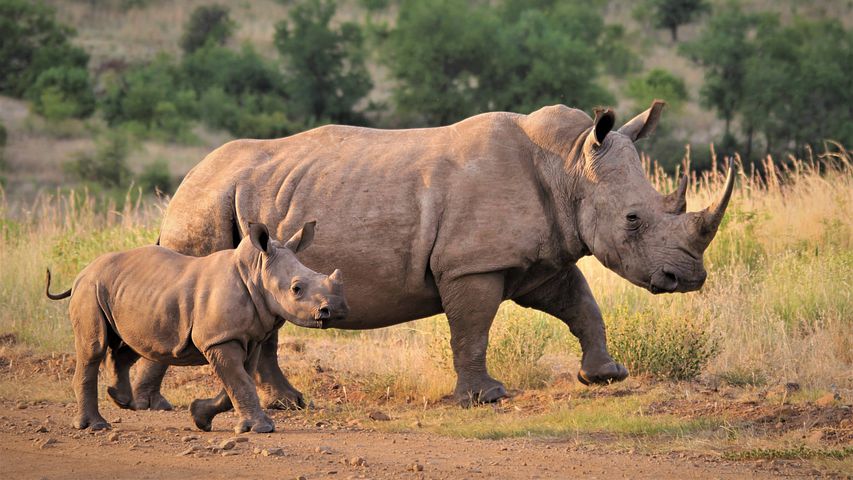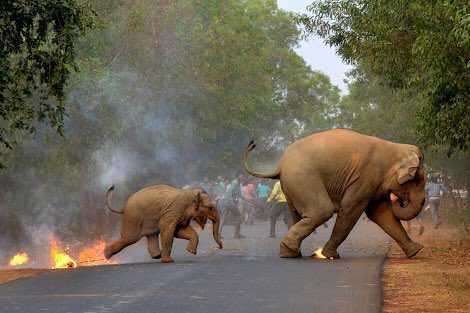It is World Wildlife Day today and seminars, webinars, meetings, talks, discussions, etc. on wildlife conservation are taking place all over the world to commemorate the occasion. India, too, is witnessing the same scenario. However, in the midst of it all, few pertinent questions do arise. Have we done enough towards wildlife conservation? Can we afford to sit smugly, satisfied with what have been achieved till now, or do we need to start worrying about the ecological imbalance and the declining numbers of some of the already vulnerable species?
To find out, Indian Masterminds talked to Indian Forest Service officers and tried to know from them about what lies ahead in terms of wildlife conservation.
TOO MUCH BUREAUCRATISATION
Dr Shekhar Kumar Niraj, Principal Chief Conservator of Forests and State Chief Wildlife Warden, Tamil Nadu, is of the opinion that the major reason for the decrease of wildlife is the shrinking of forest areas. It is the result of unplanned development leading to infringement on their habitats and buffer areas.
“We have created huge disturbances to the wild animals by cultivation, road and rail traffic, and diversion of critical habitats for development projects, destroying corridors in the process.”
He also pointed out that the wildlife areas are managed by people having no knowledge of wildlife.
“Conservation is not our priority. Too much bureaucratisation of forest service is leading to unscientific management and haphazard and ad hoc decision making. This results in lack of transparency and lack of inclusiveness. We also lack professionalism in handling wildlife crimes and prosecution, which is a major concern.”
He also emphasized that anthropogenic pressures, fragmentation, resource crunch and sectoral allocation are also causing problems in the road for conservation. He also wants immediate attention of policy makers and the public for the conservation of pangolin, Indian fox, monitor lizard, slender loris, leopard, whale, shark, sea cucumber, sea horse, green sea turtles, freshwater turtles, star tortoises, vultures, hyena, etc.
RECOGNIZE GREEN WARRIORS
Senior IFS officer Ramesh Pandey said that India has a long history and tradition of conserving wildlife. Even in conserving wildlife in human dominated landscape, the country has showed the way by conserving charismatic and mega faunal species like tigers, Asiatic lion, Asian elephants, one horn rhinoceros, gharials, Gangetic dolphins and many such key tone species.
“We have many success stories so far as species conservation is concerned. We are running Project Tiger, Project Elephant, Project Asiatic Lion, while Project Gangetic Dolphin is in pipeline.”

He also pointed out that it is now time to acknowledge our green warriors for their untiring work in protecting and conserving our invaluable wildlife, in order to move forward in the right direction.
FOCUS ON CONSERVING HABITATS
Senior IFS officer and Ex-DIG, National Tiger Conservation Authority, Mr. Surendra Mehra said, “It’s not just about the protection of individual wildlife species. Conservation of habitat at local level and landscape at larger level is more important for achieving overall conservation goals.”
Former Principal Chief Conservator of Forest (Himachal Pradesh) and DG, Ministry of Environment, Forest & Climate Change, Mr. Sudhir Pandey also shares similar views. He said, “Restore habitat with zero error protection and leave rest to nature. It will heal itself with ‘vengeance’. The resurgence of panther and wild boar populations proves the concept.”
FOCUS ON MINISMISING MAN-ANIMAL CONFLICT
2010-batch IFS officer, Ms. Dipika Bajpai said that although some reports suggest that green cover is increasing, they are only plantations. The forests areas where the wildlife reside is shrinking while the population growth and pressure on land is increasing exponentially.
“We are now aiming to become a 3 billion economy, which means lots of development and infrastructure projects. Roads and railways will increase, criss-crossing forest areas and leading to fragmentation of habitats. It will result in more man-animal conflicts, and in future, the forest department’s full focus will be occupied with this issue. We may pat our back for our achievements, but the scenario is going to be much more difficult in the future.”

Retired Principal Chief Conservator, Mr. I. D. Pandey said that protection areas need not be very large but should be away from habitations to minimise man animal conflict.
“Forest Department must focus on reducing damage to human life and property by wild animals. In Uttarakhand, for instance, nothing much has been done to reduce leopard menace on human life or crop damage by monkeys. To deal with specific area needs, stakeholders should be consulted to find impact of wildlife conservation efforts – shortcomings and remedies.”
INCLUDE PUBLIC IN ALL CONSERVATIONS EFFORTS
IFS officer of Himachal Pradesh cadre, Mr. Aishwarya Raj is of the view that all conservation efforts will go in vain if the public is not engaged in them.
“Most of the people believe that conservation hampers development. Our focus should be towards changing this narrative and creating awareness about co-existence and the importance of conversation. We need to introduce incentivisation programmes and rope in the local public, or else we will keep on losing our wildlife and wildlife habitats.”


















